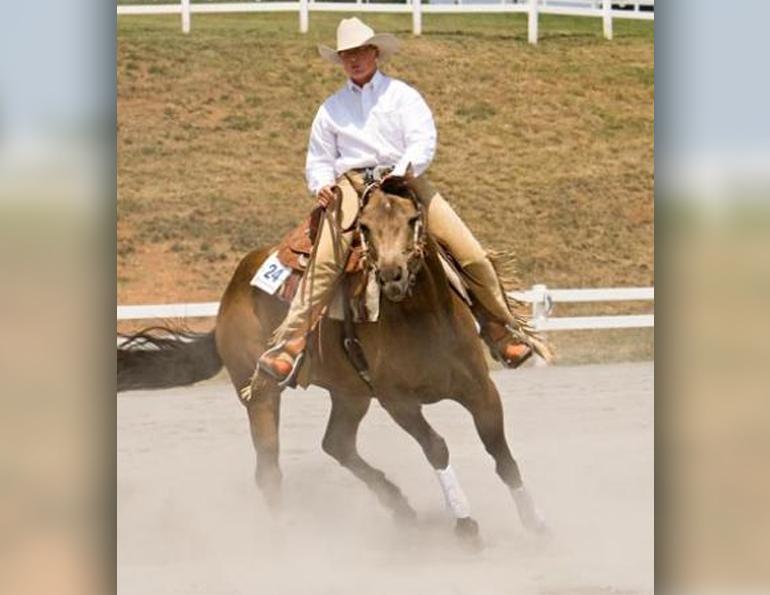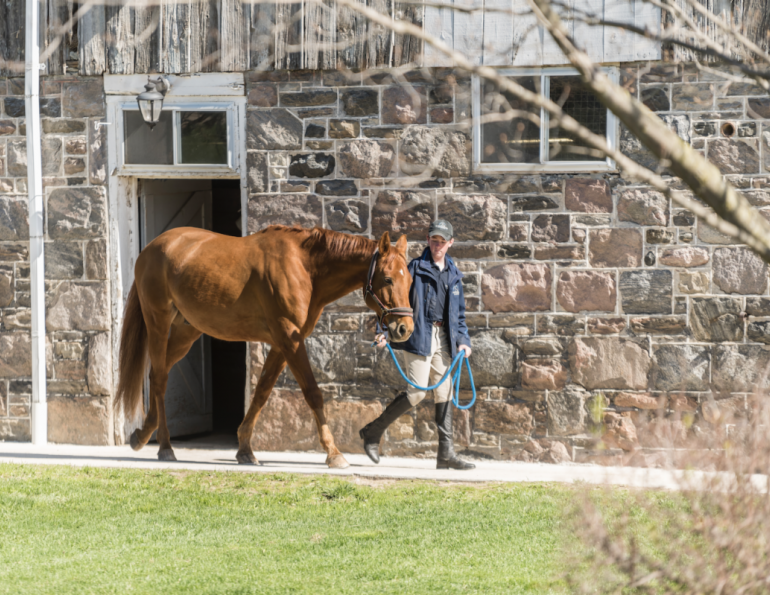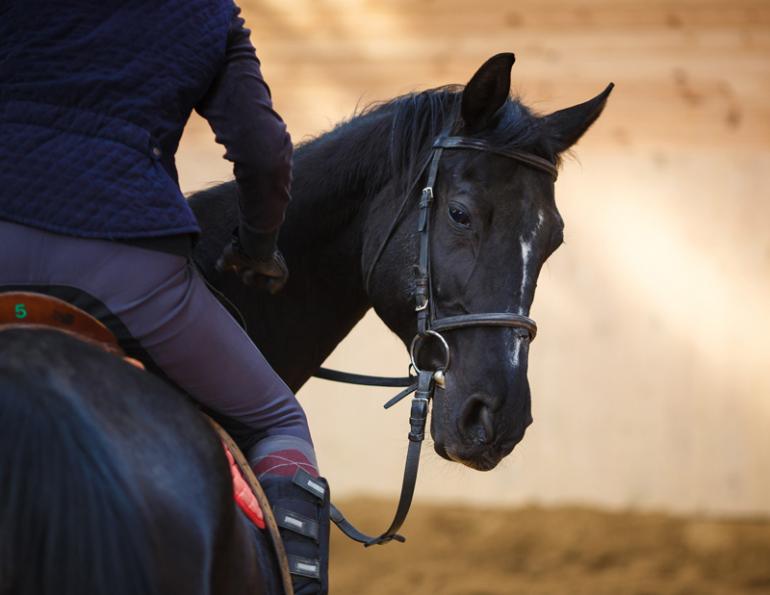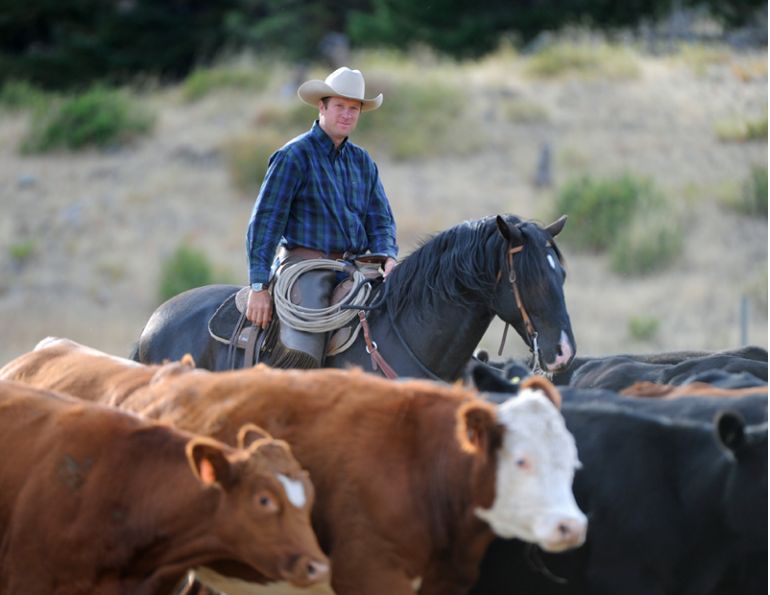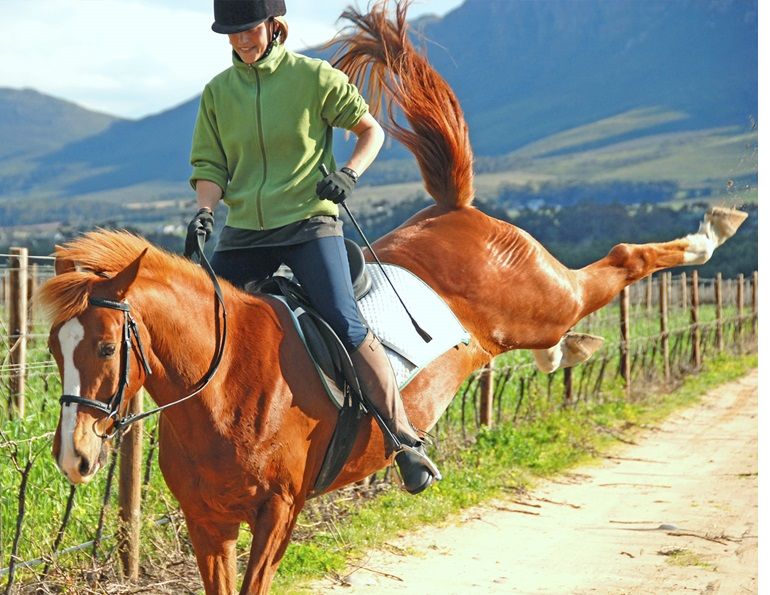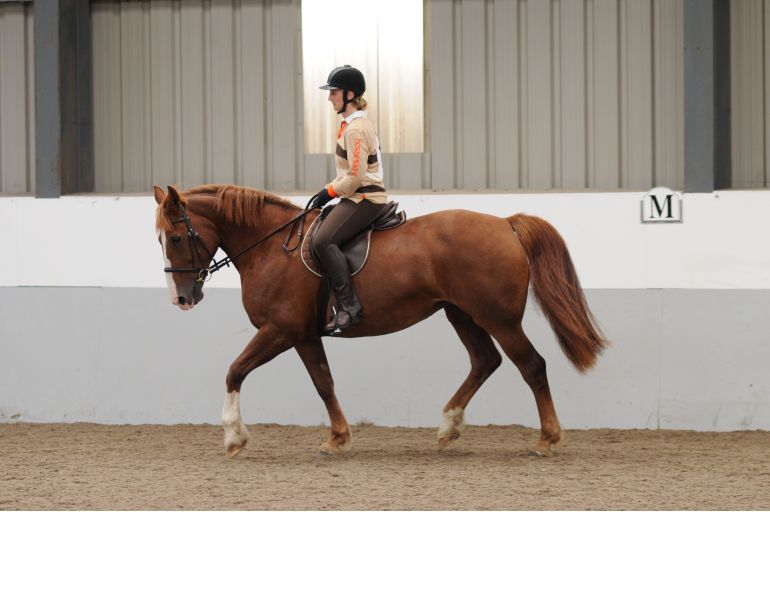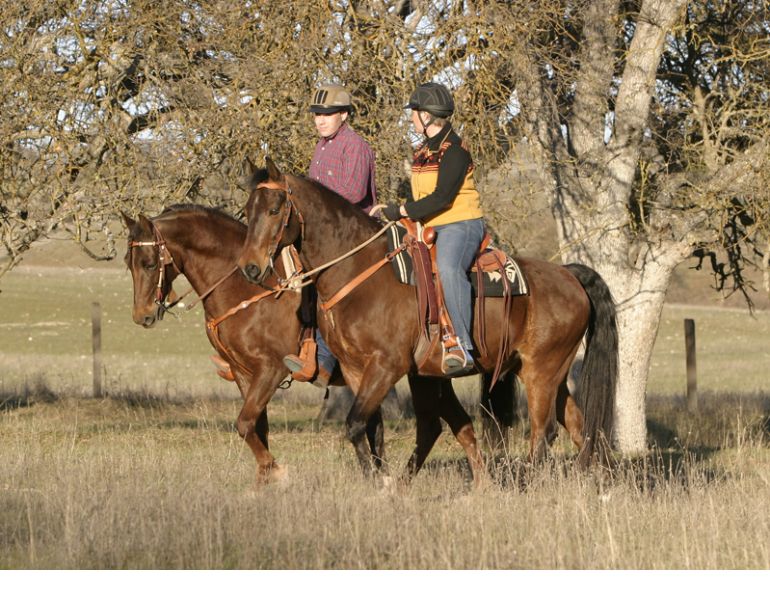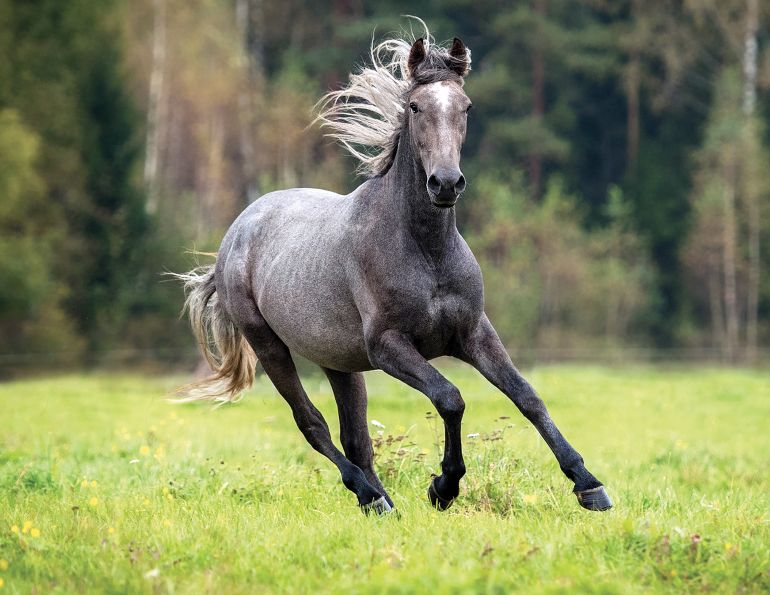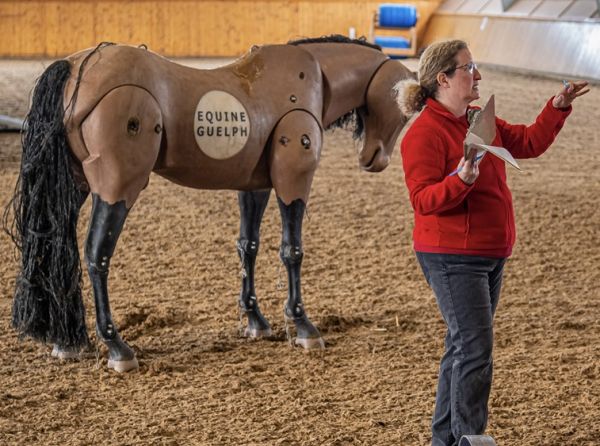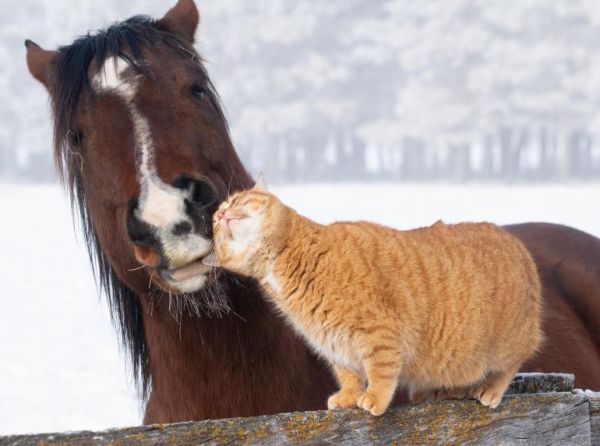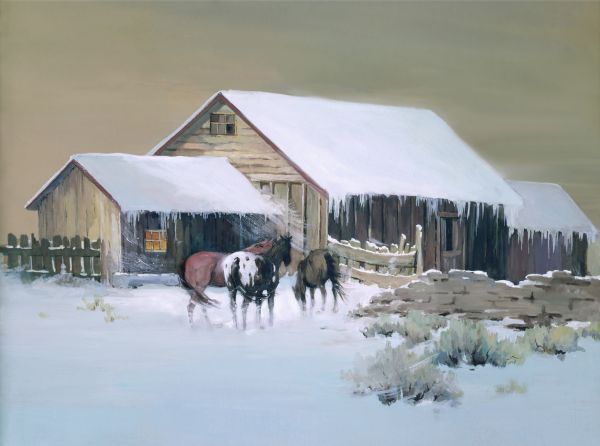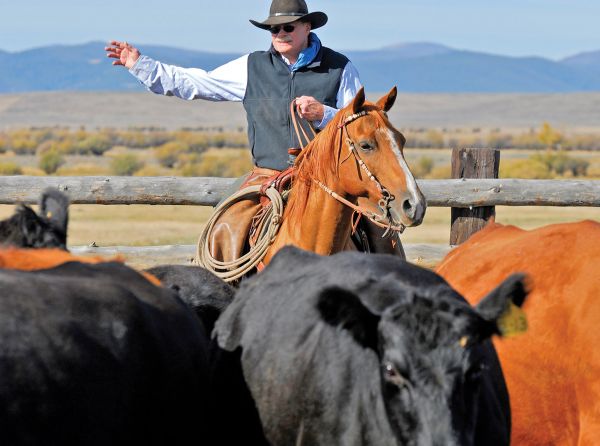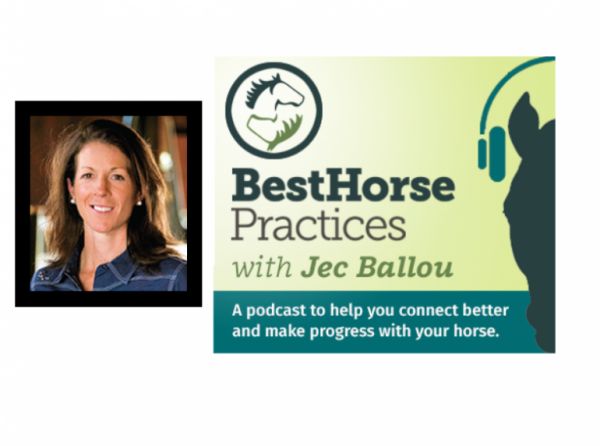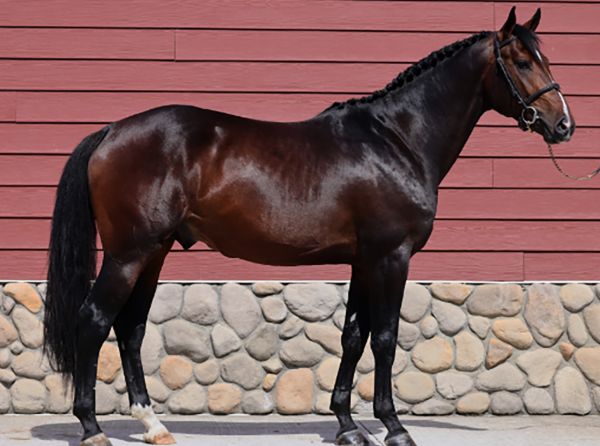By Lindsay Grice, Equestrian Canada coach and judge
Q: When I ask my horse to do a turn on the haunches, both from the saddle and from the ground, he swings his hindquarters to the outside, rather than pivoting on the inside hind. Do you have any suggestions?
A: A turn on the haunches is similar to a western pivot or, when the speed is increased, a spin. It should look like the horse is walking his forehand around his haunches while he keeps his body fairly straight (he will have a slight bend in the direction of travel).
His “pivot” foot picks up and then sets down in approximately the same spot or slightly forward (but never backward) as he rotates around. Following are typical problems that riders encounter as they’re attempting this maneuver.
Pinwheel Turn: This is my term for a horse who steps to the outside with his outside hind leg rather than stepping forward and around his pivot leg. Like a pinwheel, he pivots around his belly button rather than his hind end.
I find it helpful to press with my leg further back on the horse’s body in order to keep the hind end from leaking out. I also find that if I permit the horse’s body to bend too much in the direction of travel he is more likely to fishtail out in the opposite direction with that outside hind. With horses that are set in their pinwheeling ways, I rebuild the foundation by keeping them very straight.
By lining up their body parts so that the movement includes one or two steps of a sidepass, I restrict the motion of the front end temporarily while the back end catches up. The drill may end up looking like a square: sidepass, allow the shoulders and front end to turn, sidepass, and so on. Once my point is made, I permit the horse to bend in the direction of travel, so as not to lose forward motion.
Related: Shaping Your Horse's Canter

In a pinwheel term, the horse pivots around his belly button rather than his hind end, by stepping to the outside with his outside hind leg rather than stepping forward and around his pivot leg. Photo: Pam MacKenzie
Crossing Behind: When a horse crosses his outside front leg behind rather than in front of his inside leg he is stepping backward, probably due to his rider pulling back on the reins when asking for the turn. When I turn a horse, I think “forward.” My goal is to turn around on a soft rein with him reaching forward to the perimeter of an imaginary round pen. Only if he tries to step forward and out of the round pen does he meet with resistance. If the horse tries to step backward, I will momentarily squeeze with both legs to establish forward thought and then switch back to one leg to get him to cross over. I may even try two steps over, two steps forward until he starts to get the concept.
Sluggish Turns: If you feel that your horse turns unwillingly and you have to milk every step out of him, and you’re physically tired after you’ve done a turn around, then your horse needs to participate more. I want a horse to carry some momentum around a turn and this will lead naturally to a spin. I avoid clamping on or pressing into the horse to get each step. If he can feel a fly, he can feel my leg, so I expect him to step away from a whispering leg cue. Softening my leg completely for each responsive step gives him a “yes.” If the horse sticks, my heel will chase him by lifting my spur or even popping him with a dressage whip until he steps willingly, and then I’ll resume a soft leg.
The skills used in 360 degree turns will benefit you greatly as you do other things with your horse, making him lighter and more maneuverable.
Related: How to Develop Self Carriage by Establishing Boundaries
To read more by Lindsay Grice on this site, click here.
Main Photo: A turn on the haunches is similar to a western pivot or, when the speed is increased, a spin. The horse will have a slight bend in the direction of travel, and his “pivot” foot picks up and sets down in approximately the same spot or slightly forward as he rotates around. Credit: ChristinaHandleyStock.com



